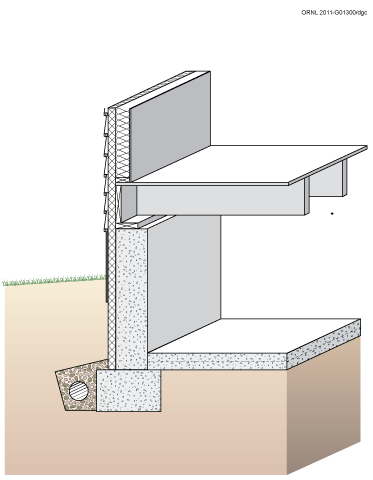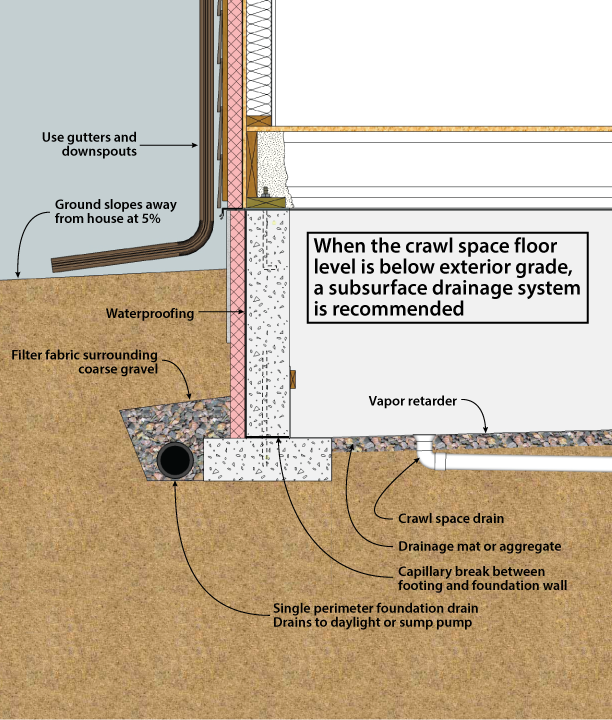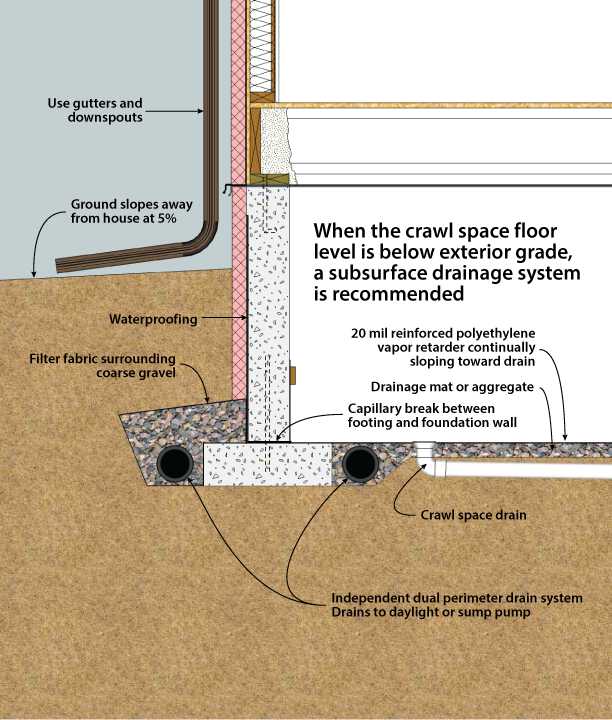
Figure 3-1. Concrete Crawl Space Wall with Exterior Insulation
While the crawl space is not meant to be living space (such as a basement), it is still very important to control the amount of moisture that can build up in that space. High levels of humidity at relatively low temperatures can cause condensation on different surfaces within the crawl space. This condensation can cause wooden support structures to rot, decreasing their structural integrity. Condensation and high levels of moisture also create an environment that is conducive to mold growth, which can have adverse effects on the health of the home’s inhabitants.
In general, moisture management schemes must control water in two states. First, since the soil in contact with the foundation wall is always at 100% relative humidity, foundation walls must deal with water vapor that will tend to migrate toward the interior under most conditions. Second, liquid water entry must be prevented. Liquid water can enter from sources such as:
There are two main configurations for crawl spaces: vented and unvented. The vented crawl space has historically been the most widely employed design. It works by allowing outside air to flow through the crawl space, thereby, in theory, removing the excess moisture and allowing it to dry (Davis et al. 2005). Unvented crawl spaces (also known as closed or conditioned) do not have vents to the outside and rely on limiting moisture intrusion from the soil, along with mechanical drying mechanisms such as air conditioning or a dehumidifier to prevent moisture build-up (Dastur et al. 2005). For both vented and unvented designs, there are common techniques that are used to limit the moisture content in the crawl space. These techniques include methods for blocking moisture sources by providing proper drainage, vapor retarders and air barriers. Additional methods for removing moisture build up in the crawl space are also employed.

Figure 3-3. Crawl Space Drainage: Crawl Space Floor At or Above Grade
The following construction practices will prevent excess water in the form of liquid and vapor from infiltrating the crawl space. These techniques are shown in Figures 3-3, 3-4, and 3-5.

Figure 3-4. Crawl Space Drainage: Crawl Space Below Grade
Even after employing an effective crawl space drainage and vapor retarder system, it is still possible for moisture to find its way into the crawl space. In a vented crawl space, cooler temperatures may cause moisture in humid air to condense on the walls, ceiling, and on the ground. Another possible source of moisture accumulation inside the crawl space is pipe leaks. These sources can create pools of water that need to be evacuated. This can be achieved by grading the crawl space floor and by installing a drain or sump pump at the low point. (Dastur et al. 2005). It is important to complete the internal drainage system early in the construction to prevent moisture buildup that can occur before the roof is completed.
Concrete foundation walls contain water from when they were poured which needs to be dissipated by allowing them to dry. In cases where the majority of the wall is below grade, it can only dry to the interior. The insulation material and the wall covers placed on the walls during the construction of the crawl space act as vapor retarders, not allowing the walls to dry to the interior. For this reason, it is recommended that these wall coverings be installed near the end of construction to allow for as much drying of the concrete as possible (BSC 2006).
In unvented crawl spaces it is important not only to have an effective vapor retarder, but also to have a complete air barrier. For this reason, all gaps between the foundation wall and sill plate, sill plate and band joist, and band joist and subfloor should be sealed. All gaps and penetrations in the foundation wall also need to be adequately sealed. A tight air barrier will prevent the influx of humid outside air through air transport, creating an interior space that is independent of outside moisture conditions. To further separate the conditions in the crawl space from those of the outside, mechanical drying systems such as a stand-alone dehumidifier should be used (Dastur et al. 2005). Alternately, the ductwork system can include the crawl space in the supply / return cycle to effectively treat it as an interior space.
To further separate the conditions in the crawl space from those of the outside, mechanical drying systems such as a stand-alone dehumidifier should be used (Dastur et al. 2005).

Figure 3-5. Crawl Space Drainage: Crawl Space Below Grade with Dual Drains
For more information visit Water Managed Foundations within the Building America Solution Center.